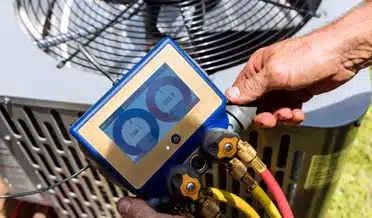AC Replacement Katy: Which Size AC Unit is Right For Your Home
AC Replacement is no small investment! If you anticipate the purchase of a new air conditioner or HVAC system, make sure you have enough information to ensure that your purchase is a good fit for your home. HVAC technicians will use acronyms and technical terms during the conversation, so make sure you understand the lingo.
The Right Size
The most important factor is properly sizing the air conditioner for your space. But what does that mean—the proper size? It will need to be large enough to handle the cooling need of your home, at your location, with the construction material and methods of your home.
- An air conditioner will need to cool a specific space, so the size of the AC will be based on the square footage of your home. You would expect an air conditioner for a 2,400-square-foot home to be larger than an air conditioner for a 1,200-square-foot home. If you need to find the square footage of your home, multiply the measurement of the length and width of the home. Having a general idea about the ceiling height of your home will be helpful later.
- An air conditioner “moves” heat from the inside to the outside and the right size moves adequate heat to cool the space. The heat is measured in British Thermal Units or BTUs—the energy needed to heat one pound of water one degree Fahrenheit. Twenty BTUs are required to cool one square foot.
- The measurement a technician uses is the ton, but it is not a measurement of weight. One ton of air conditioning function can cool 600 square feet, so 1 ton is equivalent to 12,000 BTUs.
- These figures help you determine the general size or tonnage during the AC Replacement process.
Variables
Some specific details can be added to general specifications to help determine the appropriate size of an AC Replacement for your home and location. For instance,
- You may reduce the needed capacity by 10% if a room is shaded during the heat of the day.
- You must increase the capacity of a room if a room receives harsh sun during the day.
- Add 600 BTUs for occupants above two people.
- Add 4,000 BTUs for the kitchen.
Other variables, including the number of windows and doors, building materials, and insulation affect the cooling need. When a technician accumulates all the data gathered for his “load calculation,” a total BTU figure is calculated, and the proper tonnage of the air conditioner is determined.
Efficiency Standards for an AC Replacement Katy, Tx
The Department of Energy has established manufacturing standards to protect consumers by ensuring air conditioners function properly. Each model air conditioner is given a seasonal energy efficiency rating or SEER rating. In 2023, the DOE made upgrades to its standards, so new units will have a SEER2 rating. New AC systems use the latest in refrigerant technology and are very efficient.
Both the ton measurement and SEER2 rating can be found on the model # plaque. The designation for the smallest unit, 1.5 tons, is 18 and for every increase in .5 tons, the model number adds the number six. So,
1.5 tons = 18
2.0 tons = 24
2.5 tons = 30
3.0 tons = 26, and so on
Finding the ton indicator on the model number plaque will help you understand the size of your old air conditioner system. If your home has seen modest change—a room addition or remodeling project—expect the size of the new system to change drastically. If not much has changed, a change in size should be minor.
Considering an AC Replacement in Katy, Texas?
Schedule your free AC Replacement consultation by calling AllCool AC & Heating at 281-238-9292 or contact us via email and let our NATE-certified HVAC technicians put their experience to work for you.


